As I learn more about sugar and what sugar can do to a body the more aware of how much sugar I am eating daily. Most of my sugar intake comes from grain products and fruit smoothies. Even though I am not a big fruit eater but I love drinking fruit smoothies. As healthy as smoothies are, they are loaded with natural sugar. Depending on what fruits, how much, they can be loaded with anywhere from 15 to 30 grams of natural sugar in 8 ounce glass. Since diabetes run in my family I have learned to be aware of what I eat.
For those who are not educate about sugar here is some background to keep in the back of your head as you are making food choices.
A recent USDA (United States Department of Agriculture) report found that “the average American eats 26 teaspoon a day, 3 pounds a week, 156 pounds a year, or 11,000 pounds during a lifetime if you live to the age of 70. This includes almost 64 pounds of high-fructose corn syrup (HFCS.) Refined sugar is particularly problematic because it tends to promote unintentional overeating. “ Added sugar contributes to approximately 16% of the daily total calories in a typical American diet. Just about all sweeteners have no nutritional value, cause weight gain and affect blood sugar level. There are low-glycemic sweeteners that provide a low or no-calorie alternative that does not affect blood sugar.
How does sugar process in the body?
When glucose enters the blood stream, the body releases insulin to help regulate it. Fructose on the other hand, only processes in the liver. As the liver becomes oversaturated with too much fructose, the liver starts to have problems processing excess fructose and then it turns into fat and sends it to the blood stream. This can lead to many health problems such as – high blood pressure, never feeling full, and weight gain. You can find up to 65% fructose in corn syrup and sodas.
Research has shown that a high intake of carbohydrates, including sugar, releases a feel good chemical in the brain called serotonin. Think of how you feel after indulging in a high sugar meal, dessert, or even a couple of glasses of wine. Is the feeling almost euphoric? According to PositiveMed.com, sugar is eight times more addictive than cocaine. Most sugar is hidden in processed and sweetened drinks.
The high of a sugar rush is temporary. After a few hours—or even a few minutes—you start to crash and you become tired, fatigued and lethargic. Bad news!
The more sugar you eat, the higher your tolerance becomes and the more you want. If you have a strong sweet tooth or intense cravings for sugar, chances are not that you were born that way, but that your dietary habits and food choices created the sugar monster you have become.
But good news! You can decrease or turn off the sugar monster! Let’s start off with some information.
Simple Sugars – What are they?
Why are simple sugars important to us? Sugar is found naturally in whole foods and is often added to processed foods to sweeten and increase flavor. Your tongue can’t taste the different, but your body will process and use it differently in your body.
Glucose is a simple sugar that is an important energy source needed by all living organisms. Glucose comes from the food we eat and is the bodies preferred energy source. Glucose is also known as “blood sugar”. Your body processes most carbohydrates you eat into glucose. Glucose is then processed in your body for instant energy or stored in the muscle cells and liver for later use.
Sucrose is commonly known as white table sugar, and comes primarily from sugar beets and sugar cane. It can also be found in small amounts in fruits and vegetables. Sucrose found in fruits is also known as “fruit sugar.” This is the major sweetener in baked goods and processed foods. Sucrose is composed of two sugars: glucose and fructose. Glucose is an important nutrient in our bodies and is healthy, as long as it’s consumed in moderation. Sucrose on the other hand quickly metabolizes in the intestines and absorbs into the blood steam, where it stimulates the release of insulin. Consuming too much sucrose can lead to diabetes, obesity and cardiovascular diseases.
Fructose is a simple sugar that is found in fruits, honey and some vegetables. Fructose can be used for energy. Because it does not cause a tremendous blood sugar rise, people have found it to be a good substitution for table sugar. Fructose is found primarily in fruits and vegetables, and sweeteners like HFCS.
The sugars found in fruits, vegetables and dairy foods are natural, and should have a prominent spot in your healthy eating plan. What’s dangerous to your health is added sugar, which is found in desserts, soda and baked goods, according to MayoClinic.com. White bread, white pasta and even condiments such as ketchup and barbecue sauce contain tremendous amounts of added sugar.
What are the first steps to reduce your sugar intake? Awareness! Learn to read ingredient labels and learn how much combined natural sugar and added sugars you are eating daily.
According to the American Heart Association (AHA), the maximum daily amount of added sugar is:
Women – 6 teaspoons or 30 grams
Men – 9 teaspoons or 45 grams
Growing children – 15-19 teaspoons or 75 – 95 grams
Sugar in natural foods
As you become aware of the how much added sugar you are consuming, also start to educate yourself on the amount of sugar are in natural food. Remember that dried fruits usually have twice as much of sugar than fresh. Here is a short list of the amount of sucrose in fresh fruits that we commonly eat:
Apple – 3” diameter has 19 grams of sugar
Avocado – 1 cup, 1 gram
Banana – medium size about 7” long has about 14 grams of sugar, Blueberries – 1 cup, 15 grams
Cantaloupe – 1 cup, 13 grams
Cherries – 1 cup, 18 grams
Grapes – 1 cup, 15 grams
Mangos – average size, 46 grams
Orange – 1 small (2” diameter) 9 grams
Pineapple – 1 cup, 16 grams
Pears – 1 medium size, 17 grams
Papaya – 1 small fruit, 12 grams, Strawberries – 1 cup – 7 grams
Watermelon – 1 cup, 10 grams
If you have made a personal choice to become healthy and establish a new life style, then you are on your way to good health. Start today and think about how to develop mindful eating habits. Start reading ingredient labels, but don’t get food paranoia.
If you have a sweet tooth chances and you want to start to wean off, this is going to take some time to do. In my personal liver purification program I started to wean myself off sugar-filled products such as dark chocolate, products containing rice, pasta, and caffeine and baked goods a month prior to my program. As I was purifying I experienced headaches and itchy skin for several days. The pain and itching subsided quickly. I knew my body was craving those quick energy highs. Once I started the actual purification program, it was easy to consume weeks of vegetables, fruits, brown rice and lentils it was mentally easy. As I am aging I knew I was helping myself to have a better and healthier life.
—————-
About the writer: Helen Chin Lui is a Certified Reflexologist, Certified Energy Medicine and Reiki Practitioner. She is the founder and owner of the Healing Place in Medfield, MA. She specializes in helping adults and children to find long-lasting relief from chronic pain, digestive issues and heal hormonal imbalances naturally.
If you would like to schedule a FREE 60-minute consultation to learn how Reflexology, energy medicine and Reiki can help you to find long last relief call (508) 359-6463.
For Helen’s free report “Proven Alternative Ways to Heal Common Chronic Digestive Problems: What Your Doctor Doesn’t Know Can Keep You From Healing” click here.
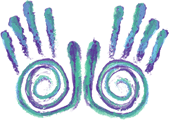
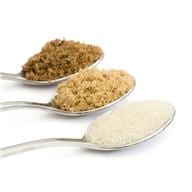


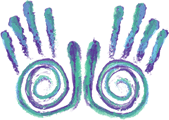

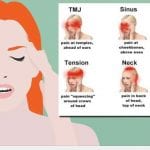

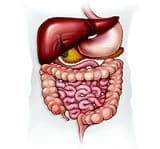

 The Healing Place LLC helps all ages to find relief from chronic pain, chronic digestive problems and balance hormones naturally. We practice COVID19 safety. Don’t forget to check on our online school HealingPlaceEnergySchool.com. Thank you.
The Healing Place LLC helps all ages to find relief from chronic pain, chronic digestive problems and balance hormones naturally. We practice COVID19 safety. Don’t forget to check on our online school HealingPlaceEnergySchool.com. Thank you.
Recent Comments